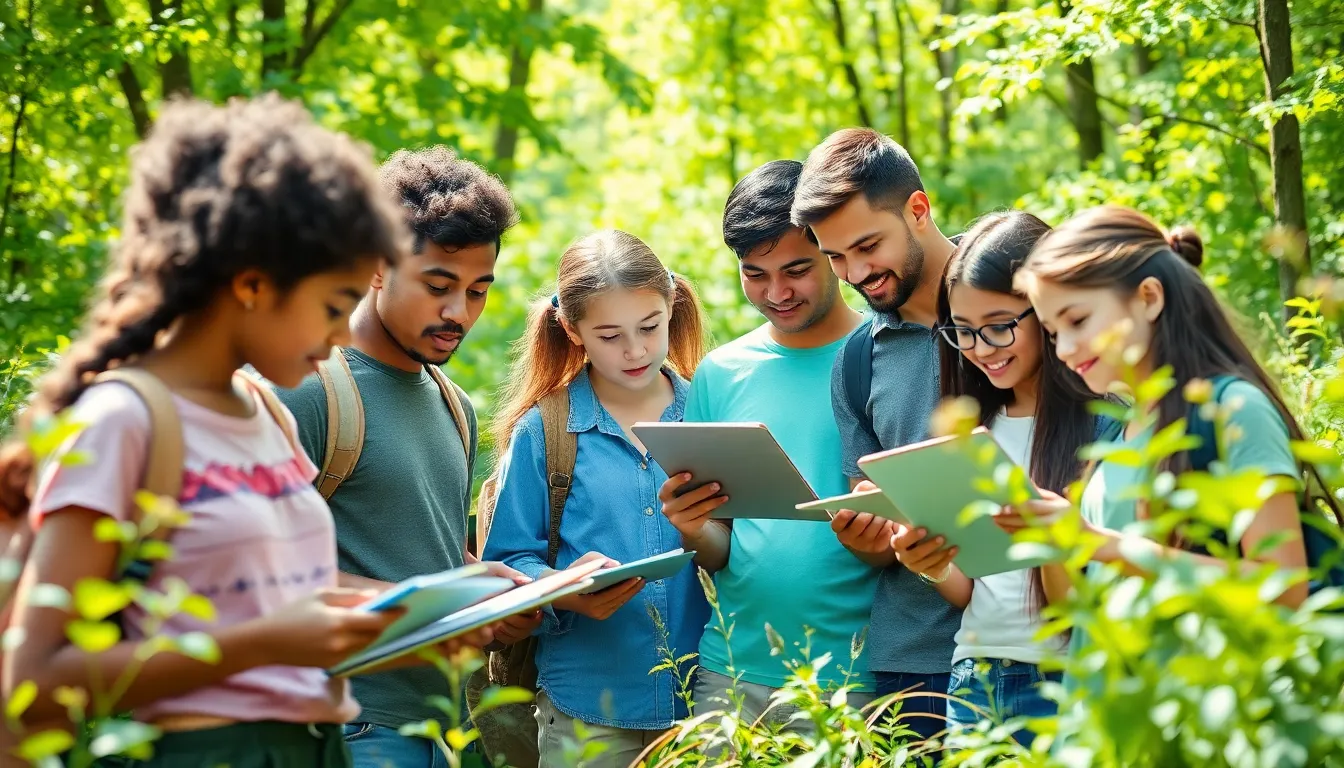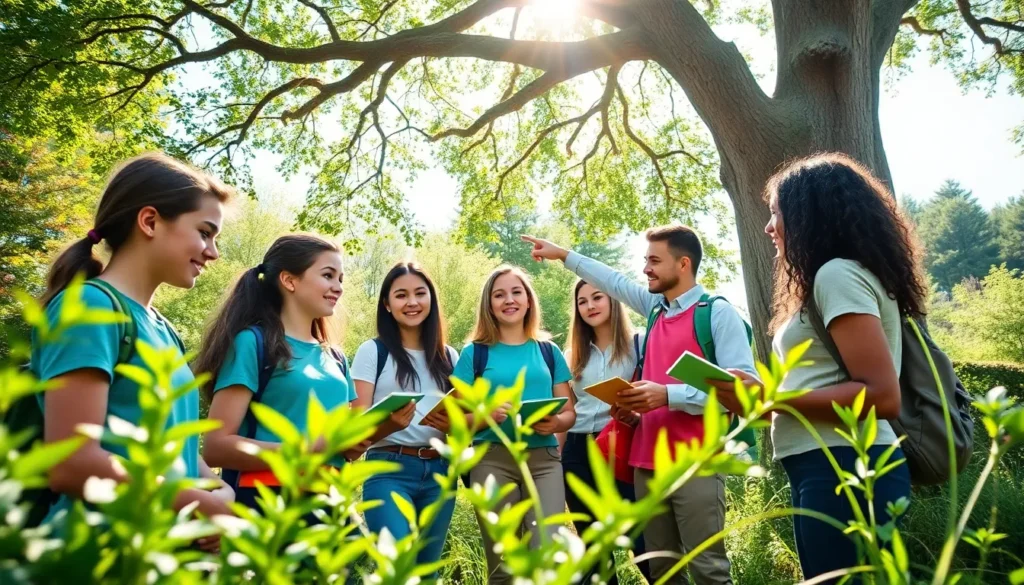Imagine swapping the four walls of a traditional classroom for the great outdoors. Yes, that’s right. Outdoor high schools are not just a dreamy concept but a transformative educational approach that’s catching on faster than you can say “nature hike.” These schools are tapping into the natural world to enhance students’ learning experiences, boost their physical health, and cultivate environmental stewards for tomorrow. Whether it’s studying biology under a tree or calculating math equations using leaves, outdoor high schools are redefining education. And let’s be honest, who wouldn’t prefer geography class on a mountain trail?
Table of Contents
ToggleBenefits of Outdoor Education

Enhancing Learning Through Nature
No textbooks are needed for outdoor high schools: the world itself is the classroom. Research shows that nature enhances cognitive function, increasing attention span and promoting creative problem-solving. Learning the intricacies of ecosystem dynamics during a hands-on exploration is not just fun but profoundly effective. Students engage more deeply when they interact directly with their learning environments, making concepts stick like peanut butter on bread.
Promoting Physical Health and Well-Being
Outdoor high school isn’t just an education. It’s an adventure for mind and body. Regular exposure to nature encourages physical activity, combatting issues like obesity and poor mental health common in many adolescents today. Outdoor classes often spark movements, whether it’s climbing over rocks or running during a scavenger hunt. Nature nurtures, and students often find themselves not only physically healthier but mentally happier. It’s an all-around win.
Fostering Environmental Stewardship
Outdoor high schools create passionate environmental advocates out of students. By experiencing nature firsthand, the students develop a sense of respect for the environment and an understanding of ecological principles. When students see littering on a trail or witness deforestation, they don’t just learn about it in theory: they feel it. This immersive experience empowers them to become active participants in sustainability. They don’t just learn about preserving the planet, they know why it’s essential, and often, they lead the charge.
Curriculum Components of Outdoor High Schools
Interdisciplinary Learning Opportunities
Outdoor high schools thrive on a curriculum that integrates multiple disciplines. Subjects aren’t confined to their silos: instead, students might study science while hiking, discussing literature around a campfire, or even practicing math with outdoor survival skills. This integrative approach fosters versatile thinkers and prepares students for the multi-faceted challenges of life beyond school.
Real-World Applications and Experiences
Outdoor education bridges the gap between theory and practice. Students move beyond classroom lectures to grapple with real-world issues. By participating in conservation projects or engaging in community service, students understand the impact of their actions. These experiences help cultivate critical thinking and problem-solving skills that will serve them well into adulthood. Who knew algebra could come into play during a tree planting event?
Challenges and Considerations
Logistical Considerations for Outdoor Programs
While the benefits are numerous, organizing outdoor high school programs isn’t without challenges. Horizons may look bright, but logistical barriers can be daunting. Schools must navigate permits, transportation, and the materials needed for an effective outdoor curriculum. Finding suitable locations can take time and resources, potentially complicating implementation. But with good planning, these hurdles can be overcome, opening up a world of possibilities for students.
Safety and Risk Management
When it comes to outdoor education, safety is paramount. Schools must develop comprehensive risk management strategies. Implementing safety protocols and staff training are critical: accidents can happen even in the great outdoors. Providing students with the skills to stay safe while venturing into nature is a vital component of the curriculum. But with adequate training and supervision, the benefits heavily outweigh the risks.
Success Stories: Case Studies of Outdoor High Schools
Student Testimonials and Experiences
Success stories from outdoor high schools abound. Students frequently express newfound interests and passion for subjects they once dismissed. For many, the opportunity to learn outside traditional walls has ignited enthusiasm for education. One student shares how a simple biology lesson on trees turned into a lifelong love for environmental science, inspired by the live demo rather than dusty textbooks. When students voice such transformations, it’s clear outdoor education is making a difference.
Impact on Academic Performance and Social Skills
Beyond individual stories, collective data indicates that outdoor schooling positively affects academic performance and social interaction skills. Schools report improved test scores and an increase in teamwork and cooperation among students. In an ever-connected world, building strong social skills is invaluable: outdoor high school helps scout leaders, team players, and communicators, ensuring that students are ready to face any challenge.



